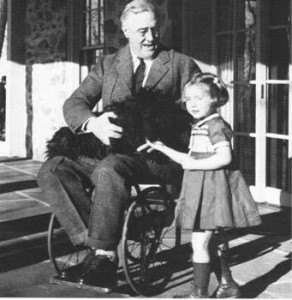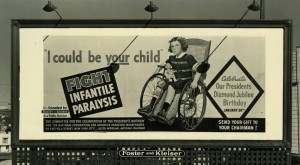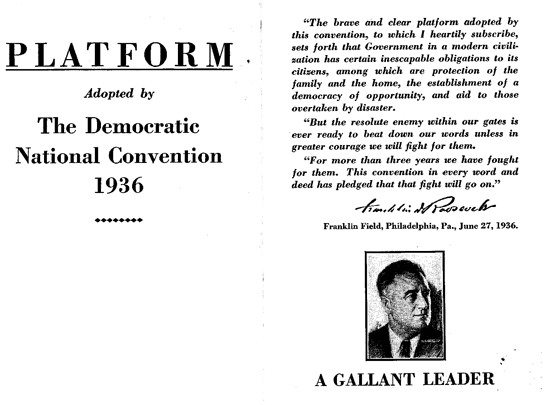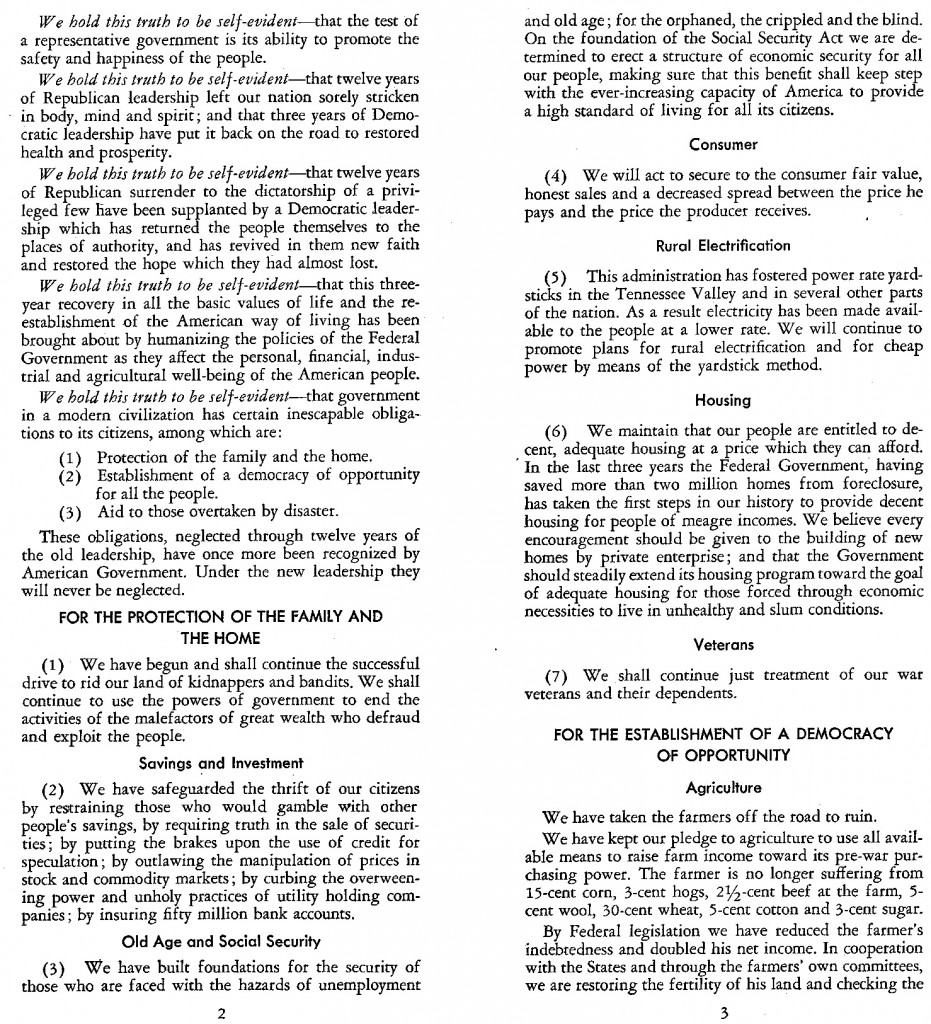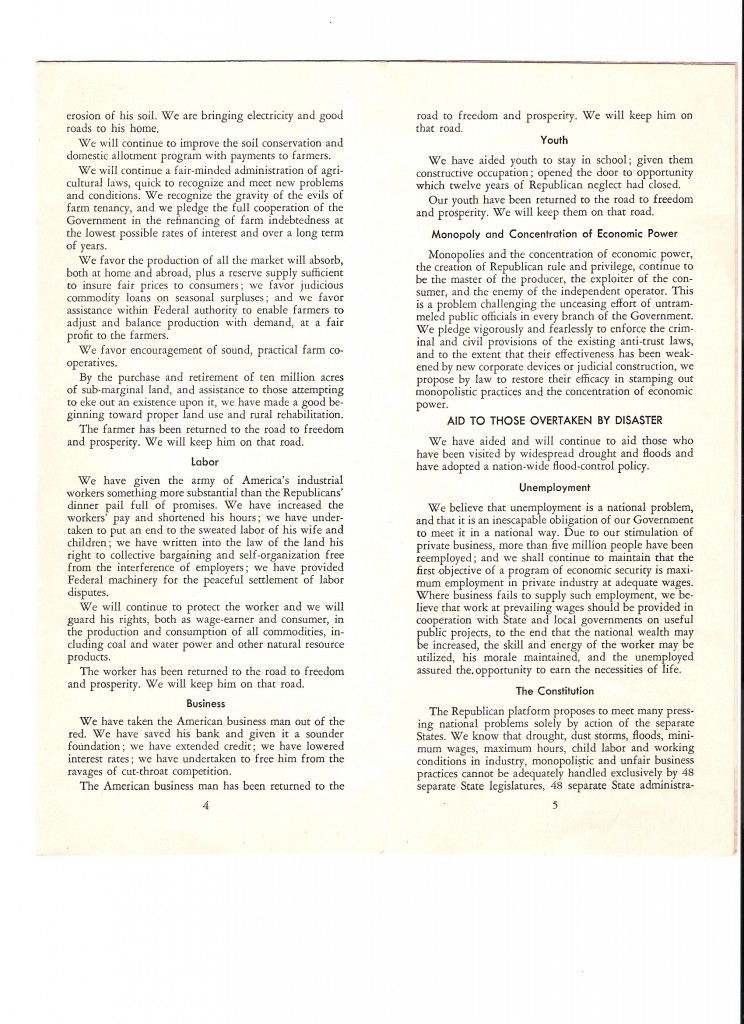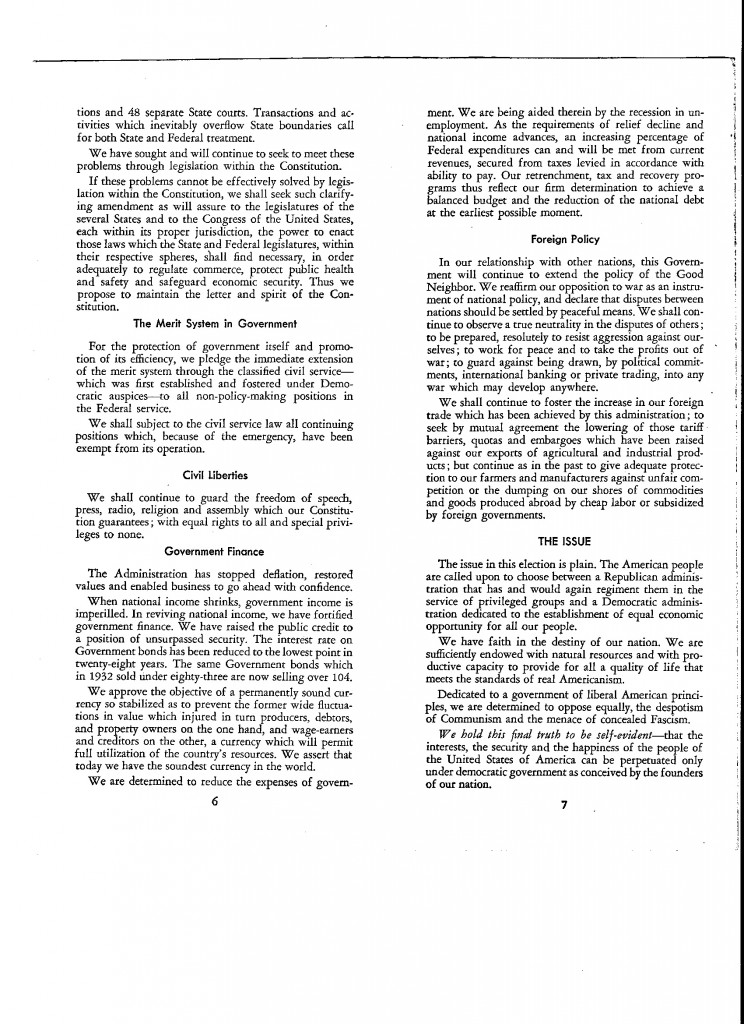More than fifty years before the passage of the Americans With Disability Act, the WPA and PWA were building special schools to help children crippled by polio. These schools were, to a large extent, the result of FDR’s own paralysis from the disease.
In 1921 Franklin D. Roosevelt became permanently paralyzed from the waist down. Most Americans knew that their president had contracted “infantile paralysis” in adulthood, but few knew the extent of his disability. The White House carefully orchestrated a vigorous image of the president. Photographs of FDR almost never capture him in his wheelchair or on crutches. FDR could stand with the help of braces and a cane, on the arm of a family or staff member, but it’s said that a bodyguard would carry the president up a rear stairwell slung over his shoulder like a sack of flour.
Roosevelt helped to found the National Foundation for Infantile Paralysis in 1938which later became the March of Dimes. Rather than soliciting large gifts from wealthy philanthropists it sought small donations. Millions of people contributed. Every year, on January 30, the President’s birthday, dances were held to raise funds to help victims of the scourge as well as to defeat it. The organization raised more funds than all of the U.S. charities at the time combined, with the exception of the Red Cross. Its efforts funded research that led to the development of polio vaccines.
A manuscript I discovered at the National Archives titled “Special Schools for Physically Handicapped Children” by Corinne Reid Frazier, noted that handicapped children in regular schools were often taunted, damaging their scholarship and self-esteem. Special schools were designed to “help [the crippled child] grow into a normal, self-respecting citizen.”
By 1938, fifty to sixty thousand children were attending such schools.
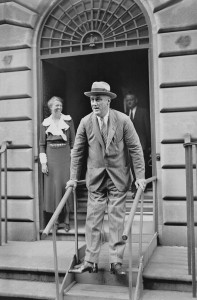
FDR Getting Better
With the help of special supports, President Roosevelt leaves his home at 65th Street in New York City. September 1933
Photo Credit: Getty Images
The special schools sometimes replaced make-do charity facilities often in wood-frame buildings. Roosevelt himself feared being trapped by fire, so the new schools were pointedly fireproof, as well as featuring ramps, elevators, and solariums. Above all, they had warm pools for the hydrotherapy to which Roosevelt had been introduced at Warm Springs, Georgia. There, “Dr. Roosevelt” met and helped people of different classes and races. He devoted much of his personal fortune to create the Warm Springs Foundation to go on helping them.
Beauty was considered therapeutic in the polio schools as in other New Deal efforts to build a healthier nation. New Deal orthopedic schools are unusually handsome and well crafted. San Francisco’s Sunshine School in the Mission District, for example, features a pool, stenciled ceilings, Moorish tiles, chandeliers, and carved oak doors.
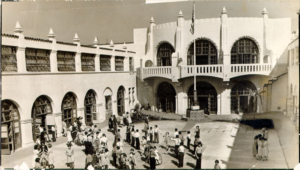
Sunshine School for Crippled Children, San Francisco, 1937
Students and staff in a courtyard at Sunshine Orthopedic School, 1937 Source
“Everything possible has been done to create the most cheerful possible atmosphere in order to encourage the children to forget as far as possible their disabilities,” noted a compilation of the best PWA projects at the time.
One might well believe that austerity prevailed during the Great Depression, but one often finds prodigal generosity instead.
